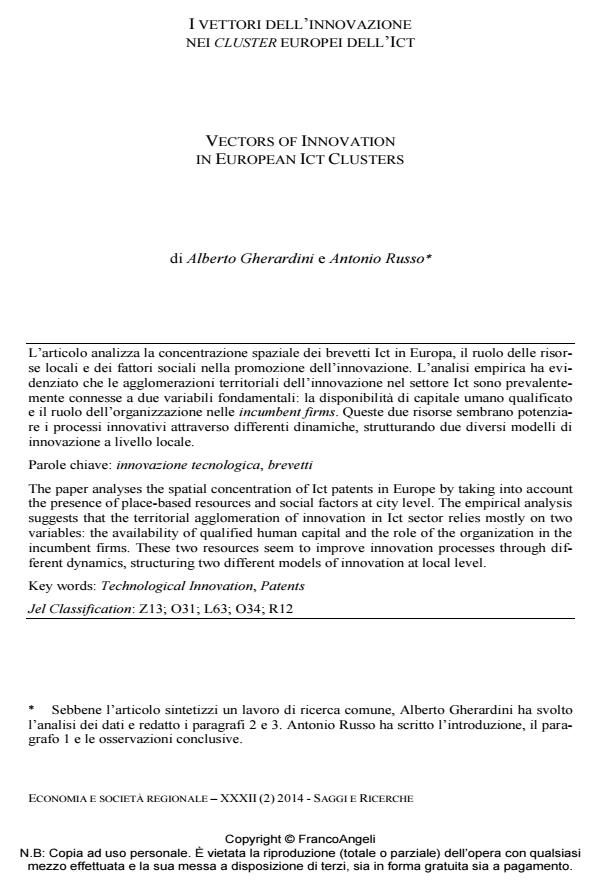Vectors of innovation in european ict clusters
Journal title ECONOMIA E SOCIETÀ REGIONALE
Author/s Alberto Gherardini, Antonio Russo
Publishing Year 2014 Issue 2014/2
Language Italian Pages 0 P. 161-186 File size 397 KB
DOI 10.3280/ES2014-002010
DOI is like a bar code for intellectual property: to have more infomation
click here
Below, you can see the article first page
If you want to buy this article in PDF format, you can do it, following the instructions to buy download credits

FrancoAngeli is member of Publishers International Linking Association, Inc (PILA), a not-for-profit association which run the CrossRef service enabling links to and from online scholarly content.
The paper analyses the spatial concentration of Ict patents in Europe by taking into account the presence of place-based resources and social factors at city level. The empirical analysis suggests that the territorial agglomeration of innovation in Ict sector relies mostly on two variables: the availability of qualified human capital and the role of the organization in the incumbent firms. These two resources seem to improve innovation processes through different dynamics, structuring two different models of innovation at local level.
Keywords: Technological Innovation, Patents
Jel codes: Z13; O31; L63; O34; R12
- Il Mezzogiorno nella trappola dello sviluppo intermedio: un’interpretazione neo-schumpeteriana della mancata convergenza Antonio Russo, in Quaderni di Sociologia /2023 pp.117
DOI: 10.4000/qds.6842
Alberto Gherardini, Antonio Russo, I vettori dell’innovazione nei cluster europei dell’ICT in "ECONOMIA E SOCIETÀ REGIONALE " 2/2014, pp 161-186, DOI: 10.3280/ES2014-002010